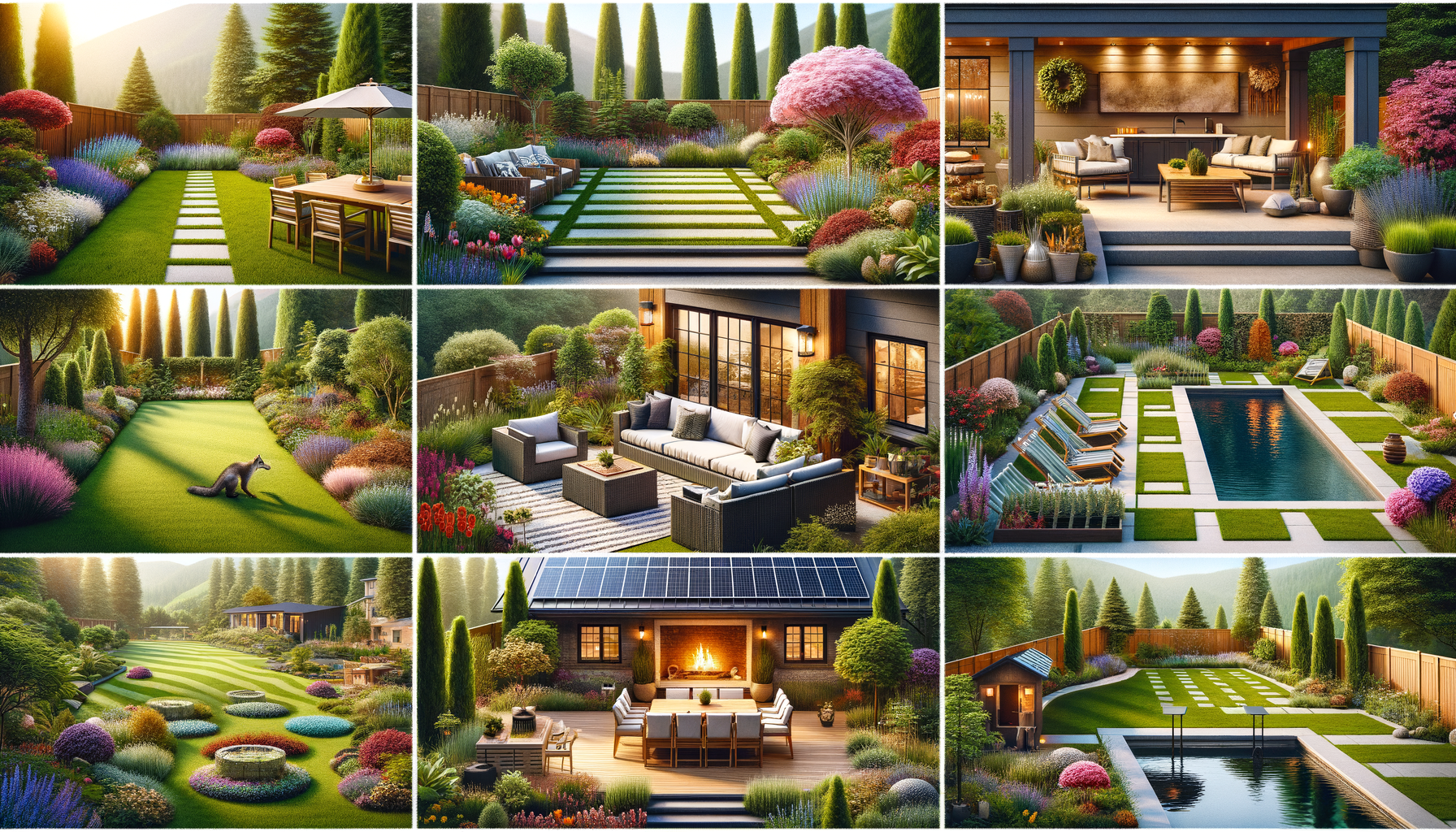Understanding the Importance of Outdoor Design
Outdoor spaces serve as extensions of our homes, providing a sanctuary for relaxation, entertainment, and connection with nature. Whether it’s a small balcony in an urban apartment or a sprawling backyard in the suburbs, the design and maintenance of these areas significantly impact their usability and aesthetic appeal. Well-designed outdoor spaces not only enhance the visual appeal of a property but also increase its value. They offer a personal retreat where one can unwind after a long day, host gatherings, or simply enjoy the beauty of nature.
Designing outdoor spaces involves considering elements such as functionality, aesthetics, and sustainability. Functionality ensures that the space meets the needs of its users, whether it’s for dining, gardening, or lounging. Aesthetics involve selecting materials, colors, and plants that complement the surrounding environment and reflect personal style. Sustainability focuses on using eco-friendly materials and practices to minimize environmental impact. By integrating these elements, outdoor spaces can become harmonious extensions of indoor living areas.
Key Elements of Outdoor Design
When designing an outdoor area, several key elements should be considered to create a cohesive and inviting space. These elements include layout, materials, lighting, and plant selection.
The layout of an outdoor space should be planned to maximize usability and flow. Consider dividing the area into zones for different activities, such as dining, lounging, and gardening. Pathways can guide movement and connect different zones, enhancing the overall functionality of the space.
Materials play a crucial role in outdoor design, influencing both the look and durability of the space. Options range from natural stone and wood to modern composites and metals. Each material has its own characteristics and maintenance requirements, so it’s important to choose ones that align with the desired aesthetic and level of upkeep.
Lighting is another essential component, extending the usability of outdoor spaces into the evening hours. Options include string lights for a cozy ambiance, spotlights for highlighting features, and solar-powered fixtures for energy efficiency.
Finally, plant selection should be tailored to the climate, soil conditions, and personal preferences. Native plants are often a sustainable choice, requiring less water and maintenance. Incorporating a mix of trees, shrubs, and flowers can add texture, color, and interest to the space.
Maintenance Tips for Outdoor Spaces
Regular maintenance is crucial for keeping outdoor spaces looking their best and functioning optimally. This includes tasks such as cleaning, repairing, and updating elements as needed.
Cleaning involves removing debris, sweeping pathways, and washing surfaces to prevent mold and mildew growth. It’s also important to regularly clean outdoor furniture and cushions to maintain their appearance and longevity.
Repairing involves addressing any damage to structures, furniture, or fixtures. This might include fixing broken tiles, repainting faded surfaces, or replacing worn-out furniture. Regular inspections can help identify issues early, preventing more extensive damage.
Updating elements in an outdoor space can keep it fresh and inviting. This might involve adding new plants, changing the layout, or incorporating new design trends. Seasonal updates, such as adding cushions or blankets in the winter, can also enhance comfort and usability.
By investing time and effort into maintenance, outdoor spaces can remain beautiful and functional for years to come.
Incorporating Sustainable Practices
Sustainability is an increasingly important consideration in outdoor design and maintenance. By incorporating eco-friendly practices, homeowners can reduce their environmental impact and create spaces that are both beautiful and responsible.
One approach is to use sustainable materials, such as reclaimed wood, recycled metal, or composite decking made from recycled plastics. These materials often require less maintenance and have a lower environmental footprint than traditional options.
Water conservation is another key aspect of sustainable outdoor design. Installing a rainwater collection system or using drip irrigation can reduce water usage and promote healthier plant growth. Selecting drought-tolerant plants and using mulch to retain soil moisture are also effective strategies.
Energy-efficient lighting, such as solar-powered fixtures or LED bulbs, can reduce electricity consumption while providing ample illumination. Additionally, incorporating renewable energy sources, such as solar panels, can power outdoor features like water fountains or pool pumps.
By embracing sustainable practices, outdoor spaces can become not only more environmentally friendly but also more cost-effective in the long run.
Creating a Personal Retreat
Ultimately, the goal of outdoor design is to create a personal retreat that reflects the homeowner’s style and meets their needs. This involves balancing functionality with personal expression, resulting in a space that feels both comfortable and inspiring.
Personalizing an outdoor space can involve incorporating unique features, such as a fire pit, water feature, or outdoor kitchen. These elements can enhance the usability of the space and provide focal points for gatherings and relaxation.
Decorative touches, such as outdoor art, cushions, and rugs, can add color and texture, making the space feel more inviting. Incorporating personal mementos or DIY projects can also add a unique touch, making the space truly one-of-a-kind.
Ultimately, the key to creating a personal retreat is to prioritize comfort and enjoyment. By designing a space that feels like an extension of the home, homeowners can create an outdoor area that is both functional and reflective of their personality.
In conclusion, thoughtful design and regular maintenance can transform outdoor spaces into beautiful and functional retreats, enhancing both property value and quality of life.




Leave a Reply